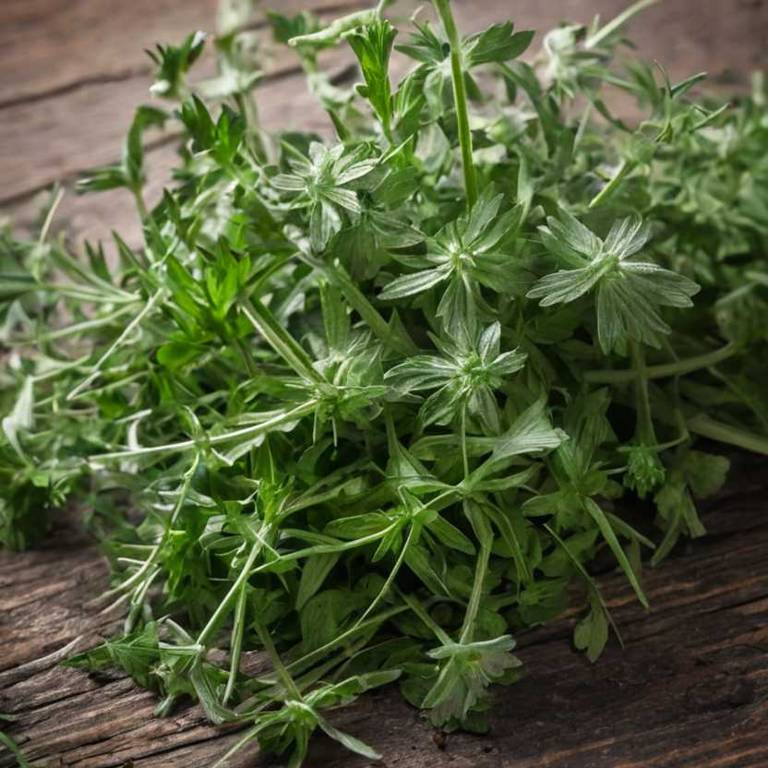Celery (Apium Graveolens)
Information Reliability Score: 5/10
This score reflects the overall reliability of the information presented in this article. It is based on the quality of scientific evidence, accuracy of sources, and the transparency of references related to Apium graveolens.
 Celery, scientifically known as Apium graveolens, is a medicinal herb, adaptogen, and spice widely used for its health-promoting properties. It is rich in antioxidants, vitamins, and minerals, offering primary benefits such as reducing inflammation, supporting cardiovascular health, and aiding digestion. Traditionally, celery has been used in ancient Egyptian, Greek, and Chinese medicine to treat ailments like fever, kidney stones, and respiratory issues. In modern wellness, it is valued for its low-calorie content, making it a popular ingredient in diets aimed at weight management and detoxification. Its unique features include a distinctive crisp, refreshing flavor and the presence of apigenin, a rare flavonoid with potential anti-cancer properties, as well as its historical use as a symbol of health and vitality in various cultures.
Celery, scientifically known as Apium graveolens, is a medicinal herb, adaptogen, and spice widely used for its health-promoting properties. It is rich in antioxidants, vitamins, and minerals, offering primary benefits such as reducing inflammation, supporting cardiovascular health, and aiding digestion. Traditionally, celery has been used in ancient Egyptian, Greek, and Chinese medicine to treat ailments like fever, kidney stones, and respiratory issues. In modern wellness, it is valued for its low-calorie content, making it a popular ingredient in diets aimed at weight management and detoxification. Its unique features include a distinctive crisp, refreshing flavor and the presence of apigenin, a rare flavonoid with potential anti-cancer properties, as well as its historical use as a symbol of health and vitality in various cultures.
FREE CHECKLIST
The Only 10 Herbs You Need to Heal 90% of Common Ailments.

Table of Contents
Scientific and Botanical Profile
Celery, with botanical name Apium graveolens, is a herbaceous plant belonging to the Apiaceae family, commonly known as the carrot or parsley family. It is widely recognized by its common names including Celery, Apium, Wild Celery, Common Celery, and Wild Celery, and is native to regions such as Europe, Asia, North Africa, the Middle East, Southwest Asia, Southern Europe, the Mediterranean Region, Turkey, Iran, Egypt, Lebanon, and Syria. Morphologically, it is a biennial or annual plant with hollow, ridged, and aromatic stems, and its leaves are fern-like, divided into narrow, lance-shaped segments. The plant produces small, yellowish-green flowers in umbrella-like clusters called umbels, and its root is the primary part used in culinary and medicinal applications. Its distinctive flavor and aroma are attributed to compounds such as apiol and limonene, which contribute to its widespread use in cooking and traditional medicine.History and Cultural Relevance
Celery was used by ancient civilizations such as the Greeks and Romans for both culinary and medicinal purposes, with its aromatic leaves and stalks valued for their purported health benefits. In traditional medicine systems like Ayurveda and Chinese medicine, celery has been employed to treat ailments ranging from digestive issues to respiratory conditions, often due to its high content of essential oils and minerals. It also holds cultural significance in various rituals, such as being used in purification ceremonies in some Native American traditions and as a symbol of strength in Mediterranean cultures. Today, celery remains a staple in natural remedies, with its extracts still used to support digestion, reduce inflammation, and even aid in weight management. Its enduring presence in global cuisine and healing practices highlights its deep-rooted historical and cultural relevance.Chemical Composition and Nutritional Profile
Celery contains a variety of bioactive compounds, including alkaloids, flavonoids, essential oils, and terpenes, which contribute to its distinctive aroma and potential health benefits. It is rich in vitamins such as vitamin K, vitamin C, and vitamin A, as well as minerals like potassium, magnesium, and iron, making it a nutrient-dense vegetable. Additionally, celery is a good source of antioxidants, including apigenin and lutein, which help neutralize free radicals and reduce oxidative stress in the body. The essential oils in celery, such as myrcene and limonene, may have anti-inflammatory and antimicrobial properties, supporting overall immune function. These compounds work synergistically to promote digestive health, reduce inflammation, and support cardiovascular wellness by improving blood flow and lowering blood pressure.Medicinal Properties and Health Benefits
Apium graveolens has long been recognized for its medicinal properties, offering a range of health benefits across multiple body systems. It is particularly valued for its effects on the digestive system, where it can help alleviate symptoms of indigestion, bloating, and gas due to its carminative and antispasmodic properties. Additionally, it supports respiratory health by acting as an expectorant, helping to clear mucus from the lungs and ease conditions like bronchitis and asthma. Compared to similar herbs such as fennel or dill, Apium graveolens stands out for its stronger and more versatile therapeutic profile, with higher concentrations of essential oils and flavonoids that enhance its potency. Its unique advantages include a broader spectrum of applications, making it a preferred choice in traditional medicine for both internal and external use.Discover the 10 best health benefits of Celery.